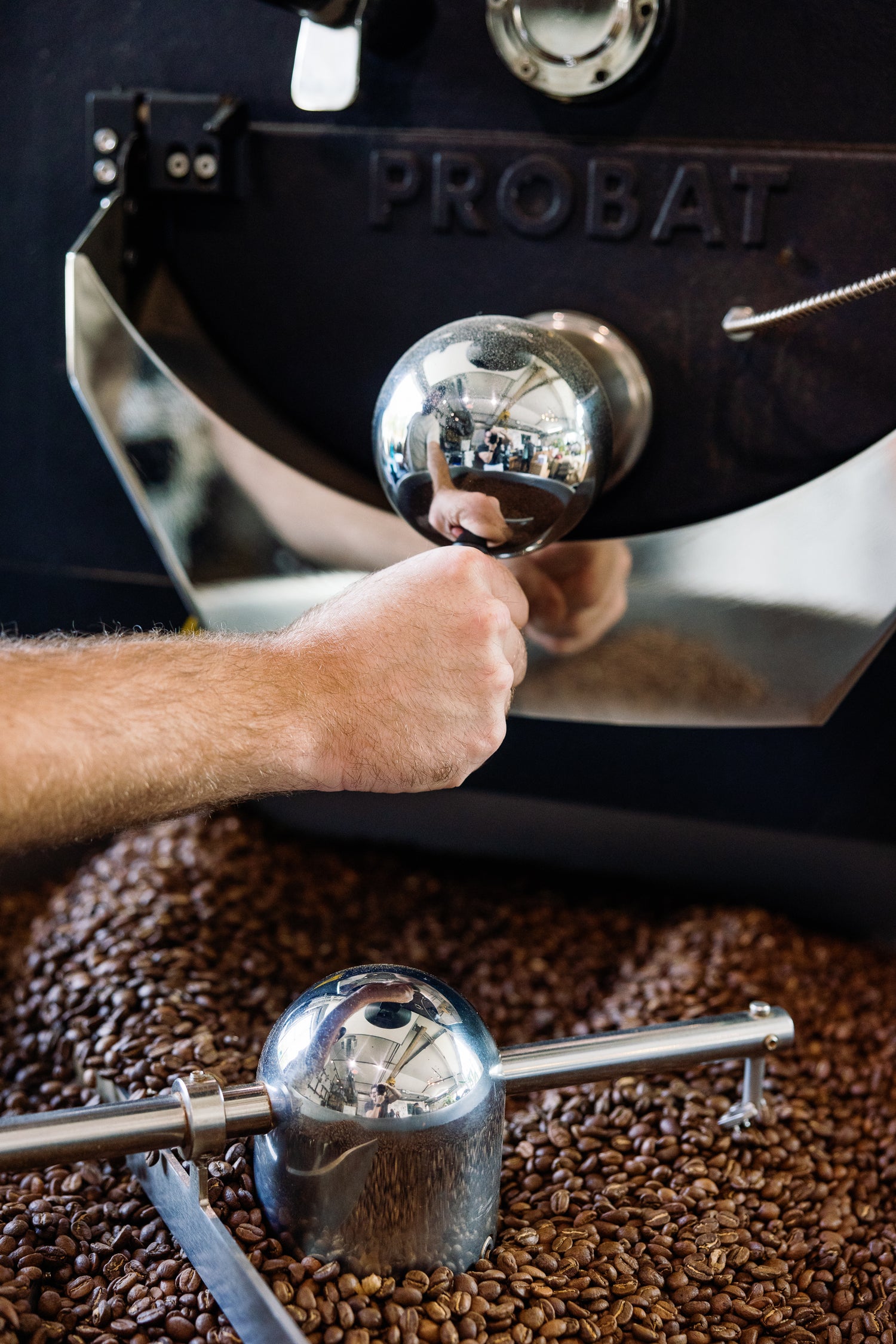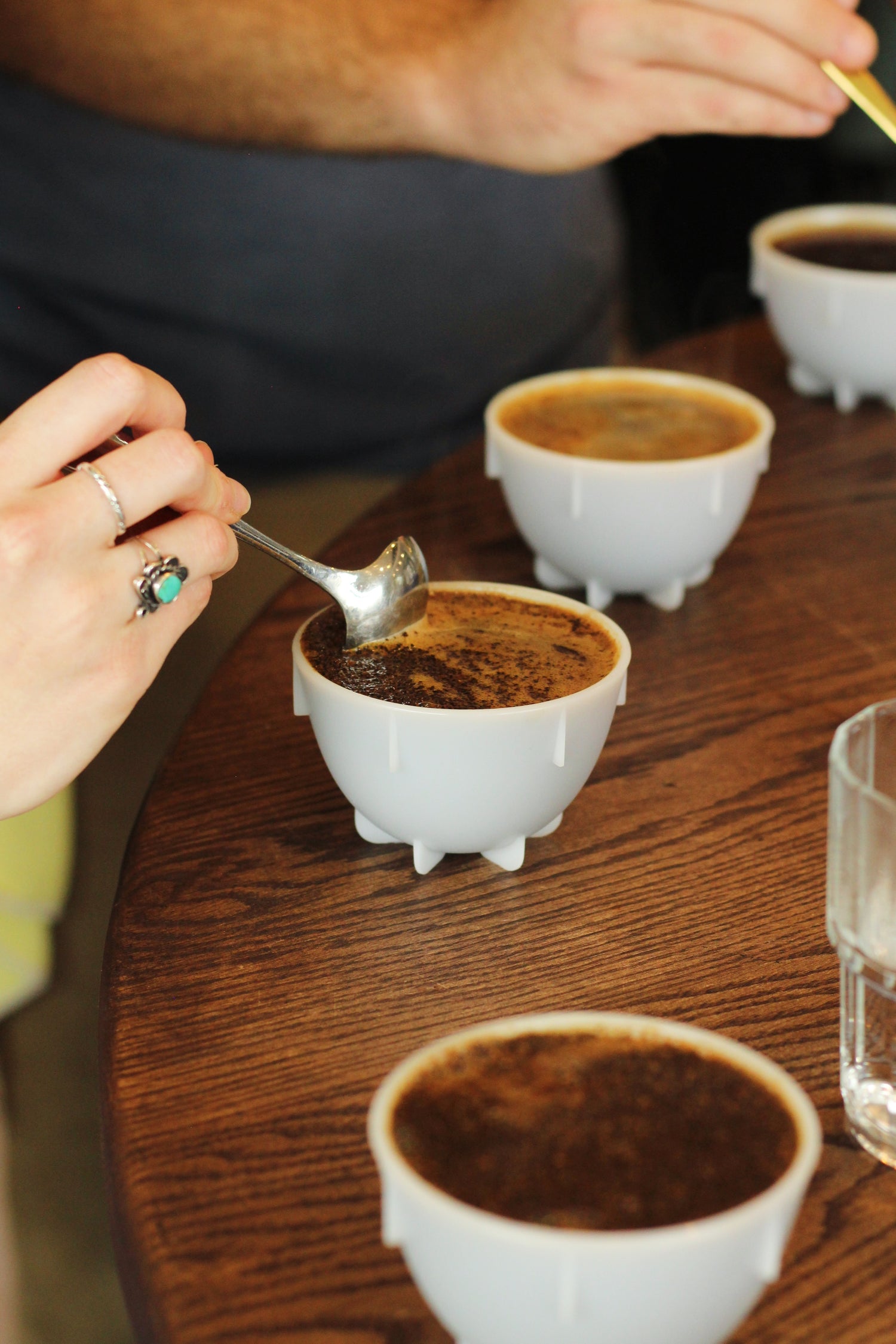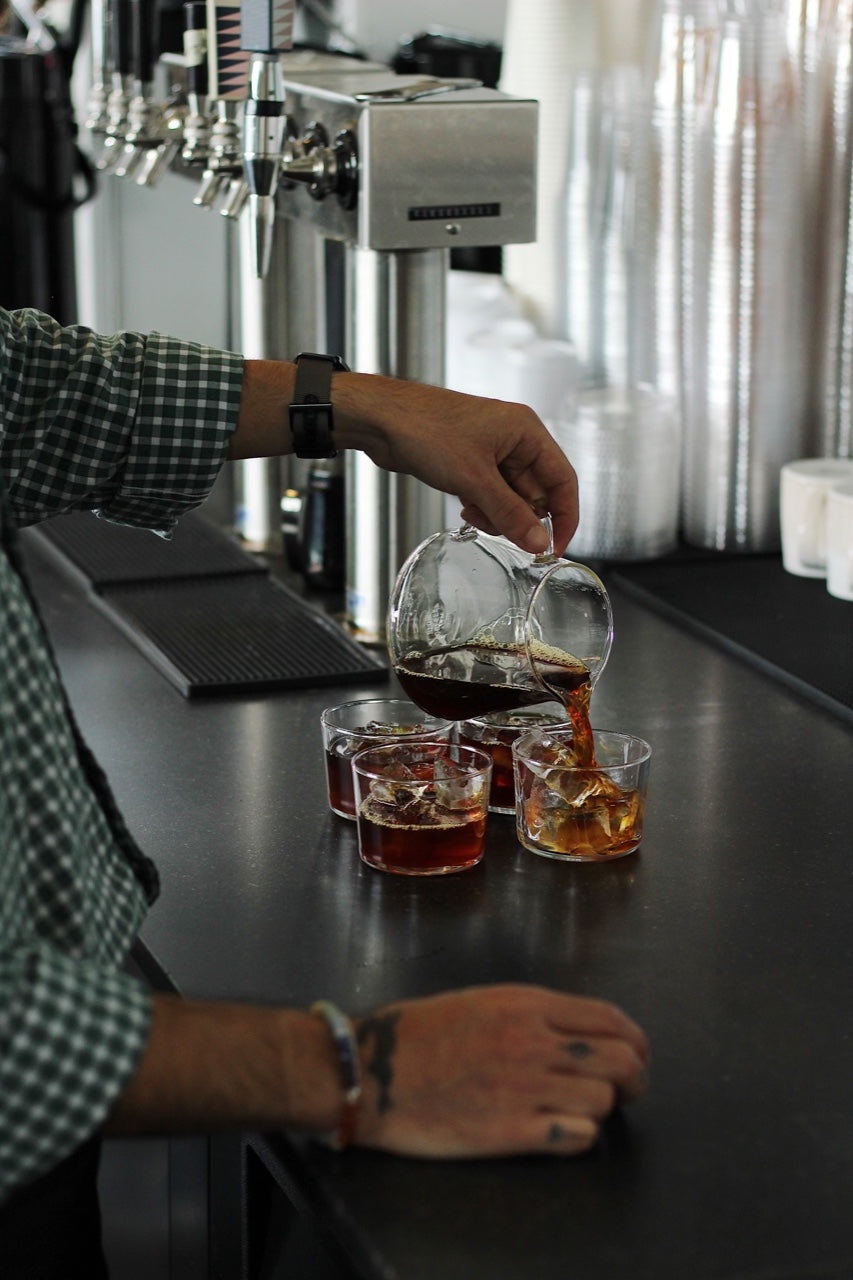
Light and Dark Roasts?
We teach and advocate for language and thought that moves away from ‘light’ or ‘dark’ roasts. We rigorously taste and quality check our coffee and the heat applied so that the level to which it is roasted matches what we want to highlight in that specific coffee.
For example, we will not try to overshadow floral and refined coffee by overdeveloping its body. Nor, will we try to undercook or ‘add acid ‘ to a coffee whose main attribute is roundness, weight, and chocolate.

Technical Approach
We adhere to the belief that the roasting process for all coffee consists of three scientifically defined phases: drying, Maillard reaction, and caramelization.
The duration and intensity of heat application during these phases significantly influence the time a coffee spends in each stage.
The resulting profile of a coffee is heavily influenced by the duration of each phase.
Achieving proper roasting involves ensuring that the exterior of the bean is more developed than the interior, similar to grilling a steak.
To objectively assess the roast quality, we employ tools like a refractometer.
The refractometer provides three key readings: exterior, interior, and the 'spread,' indicating the numerical difference between exterior and interior readings.
While tools like the refractometer offer valuable insights, we acknowledge their limitations. Each coffee is unique, and what's suitable for one won't necessarily apply to another.

Cultural Preferences
We roast with an understanding of our culture's prevailing preferences. Recognizing that many people are not accustomed to specialty coffee, we guide customers on a journey toward expanding their sensory experiences. This approach begins with our meticulous sourcing and coffee selection process and extends into our roasting techniques. We focus on developing flavors, sugars, and achieving balance. Our emphasis is also on how acidity and body interact to create a harmonious coffee experience.

